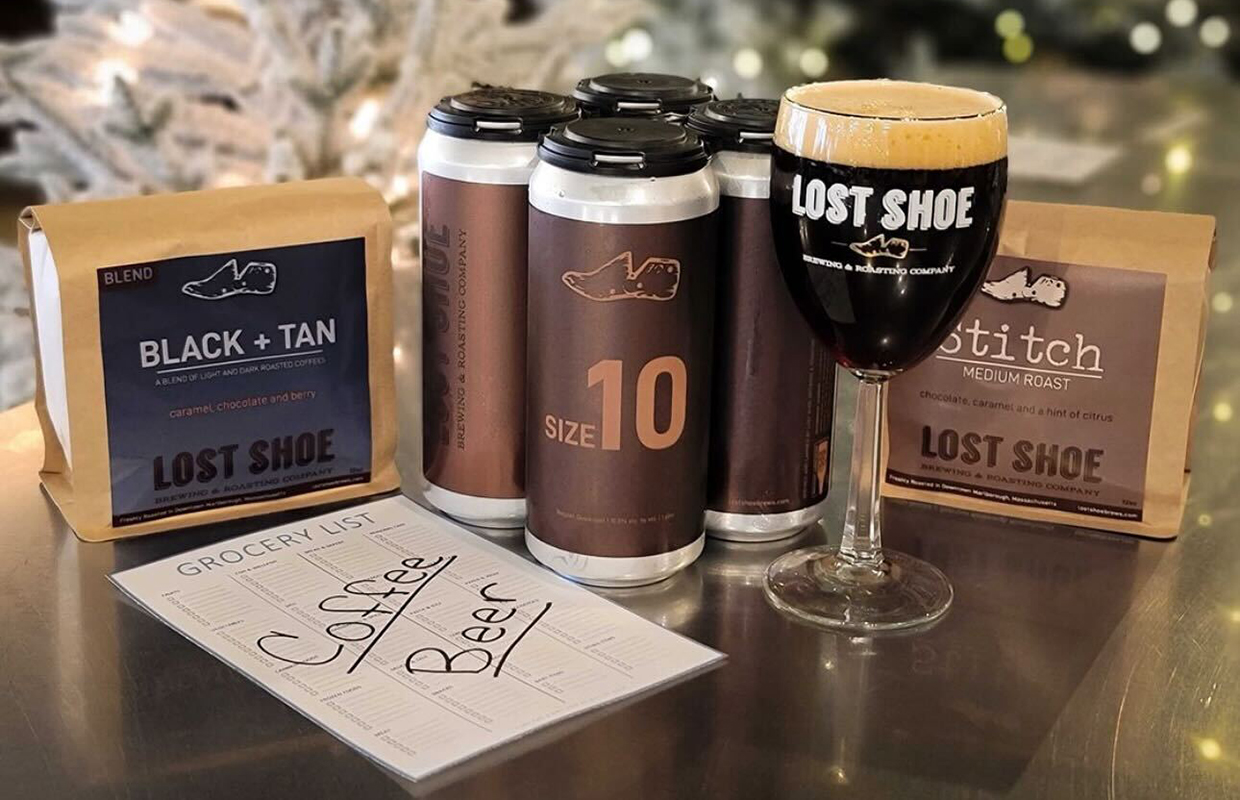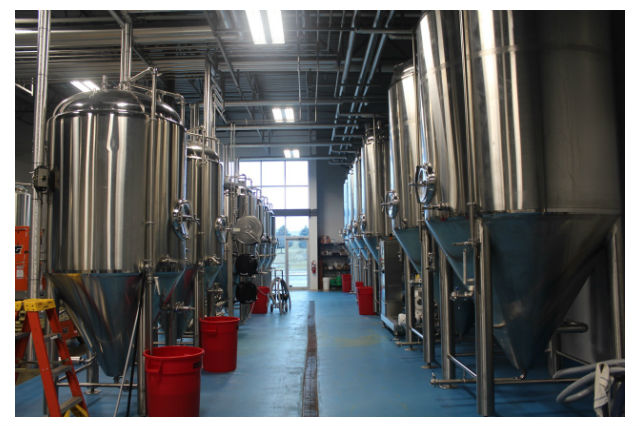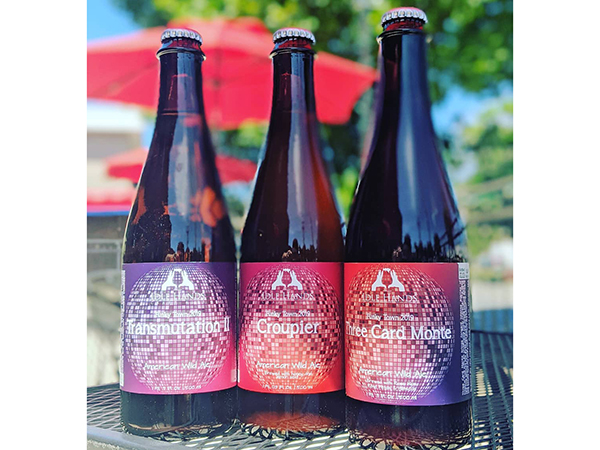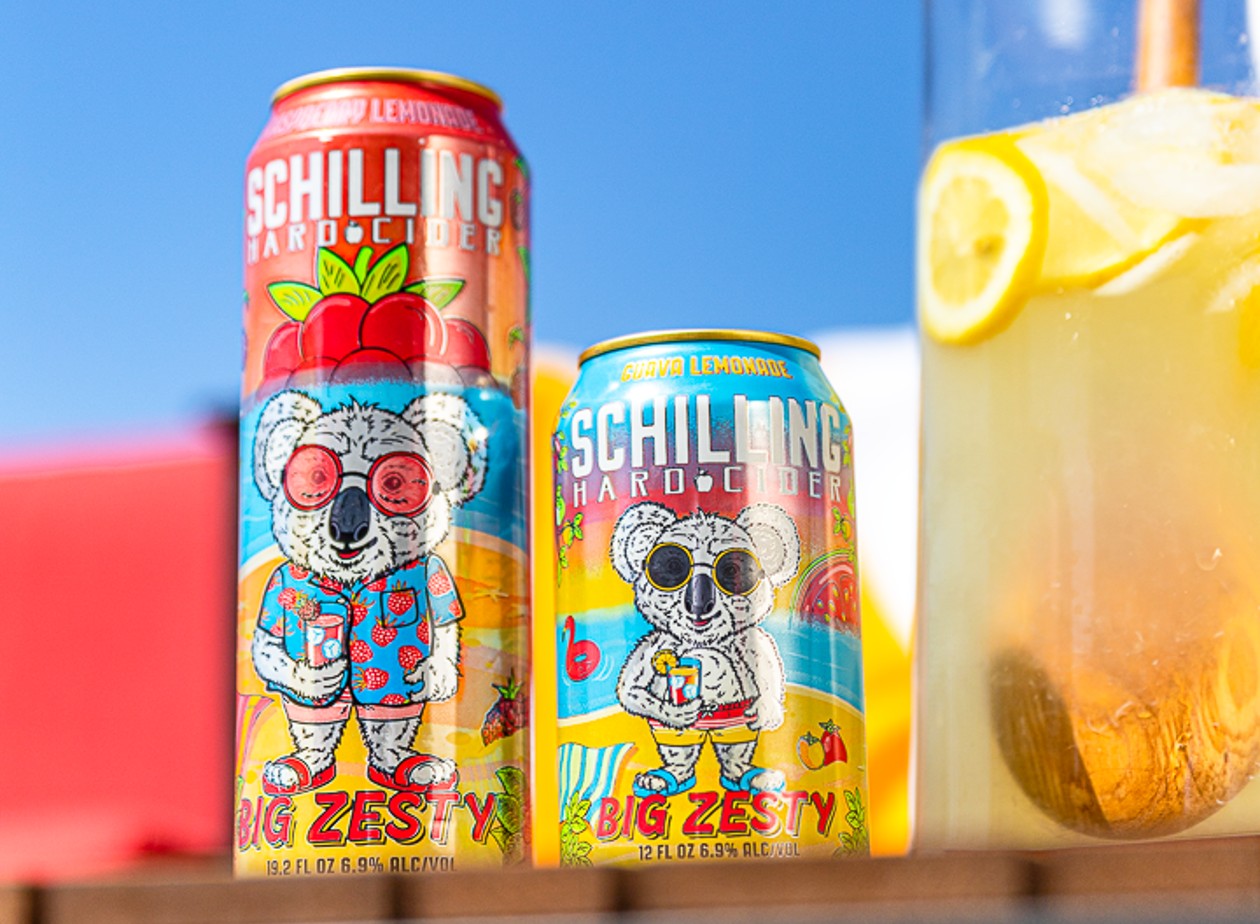
Finding a way to be a unique niche along with impacting their community in a different way than most other start-up breweries, companies like WeHa in West Hartford, Connecticut and Lost Shoe in Marlborough, Massachusetts took their brewery model one step further.
Both of these breweries, creating a menu of craft beer to serve, also opened up as a coffee cafes, creating a similar artisan menu of in-house roasted coffee.
“It was always our plan to open as a cafe and taproom, roasting our own beans and brewing our own beer,” said WeHa founder Cody McCormack. “There are many similarities between the two crafts and we wanted to offer fresh local craft beer and coffee in a communal setting, where people could come any time of day for a craft beverage, whether that was in the morning for coffee or later on for a beer or both.”
Lost Shoe opened with a vision to be both from the beginning, said co-owner and Roaster Melynda Gallagher.
“[Roasting] was the piece of our business plan that made us more confident in the leap from putting it on paper to making it a reality,” she said.
For these breweries, doubling community impact — along with their bottom line — was a key to their business model.
“Our lease for our space doesn’t change whether we are open four evenings a week or seven full days a week,” Gallagher said. “Maximizing our sales hours was a major part of our business plan.”
Industry trends are changing, McCormack said, and consumers are looking for more than just beer and want the whole experience when coming to a brewery, “whether that’s craft coffee, food options, craft cocktails or beer slushies,” he said.
“Having a broader portfolio allows us to offer more than just beer to our customers and allows us to diversify versus having all our eggs in the beer basket.”
Lost Shoe does see a lot of crossover in consumers from morning to night.
“People also love that they can stop by on the weekend at 10 a.m. and grab a coffee and then switch over to beer at 11 a.m. when we open the taps,” Gallagher said. “We do like to combine the coffee and beer sides of our business too.
“Aside from brewing beers with our coffees we also offer coffee flights, have incorporated house-made tea syrups in our hard seltzer, and even made a hop simple syrup for our coffee bar as well. It’s always fun to combine our two crafts into unique offerings.”
This business model lends itself to be very internally focused with taproom sales being the primary driver.
Lost Shoe does very limited distribution for both its coffee and beer and relies mostly on attracting people to the taproom.
“We focus our energy on hosting various events and creating an exciting experience for customers when they are in our taproom,” Gallagher said.
The biggest challenge, McCormack added, is getting on the shelves and marketing craft coffee as a whole.
“Craft beer has a reputation associated with it,” he said. “so you’re selling craft coffee and your own brand at the same time.”
Extra Investments
Now breweries that serve coffee are not unheard of. Multiple breweries across the country are duel models of serving coffee in the morning while having a more beer-heavy crowd later in the day. Yet most breweries that Brewer contacted said they work with fellow roasteries in their town or hire out for the roasted beans. For WeHa and Lost Shoe, they invested in equipment to do it on their own.
The key investments WeHa had to make were purchasing a 3 kg roaster from Mill City Roasters and coffee bar equipment — including a La Marzocco Linea 2 Group espresso machine and Mazzer Major V and Mahlkonig grinders.
“We also created a dedicated space for our roasting production and allocated a portion of our taproom to house the coffee bar,” McCormack explained.
The Lost Shoe roasting area itself takes up much less space than the brewhouse in the production area, Gallagher said.
“Though it is small we can crank out a lot of coffee on it,” she said. “We have a Diedrich IR-12 roaster and also a Vortx eco-filter which helps filter out VOCs from the roasting process. Aside from those two pieces the only other large pieces of equipment we have are a 100-gallon and a 14.5-gallon tank for cold brewing coffee — both from Stout Tanks, where we got out brewhouse from.”
Brewing beer definitely requires a lot more equipment compared to adding in a roastery, Gallagher said.
“On the taproom side, the big investments for coffee are the espresso machine, coffee brewer, grinders for both coffee and espresso, and an ice machine,” she noted.
Four-in-One
The biggest thing that Lost Shoe didn’t fully comprehend until a year or so into the business opening was that they weren’t just opening and operating one business, they were operating four businesses under one roof.
“Each area of our business from roasting coffee to brewing beer to operating a coffee bar to serving beer requires a lot of individual attention and focus to do right,” Gallagher said.
WeHa cross-trains all employees so that they can work both sides, McCormack said, whether that’s working on the coffee bar and pulling shots or pouring beer on the taproom side.
“We have also trained our brewing production team to learn the ins and outs of coffee roasting,” he pointed out.
All of Lost Shoe’s bartenders are crosstrained as well
“We do have members of our taproom team that have backgrounds in coffee or beer but they do get trained on the other so that everyone is interchangeable and can cover various shifts,” Gallagher said.
On the production side, they have a brewing team of two and a roasting team of two however on packaging days everyone in production helps out to run the canning line.
“It is a small but very efficient team,” she said.
In the past four years that Lost Shoe has been open, Gallagher said they have noticed a shift in people who want to enjoy the taproom environment but are looking for more non-alcoholic options. That means they can serve the coffee menu during all opening hours along with introducing a zero-proof menu this spring.
“We have also been able to get creative with our hard seltzer offerings to craft them into more cocktail-inspired beverages which adds an even broader range to our portfolio and still falls within our brewing license restrictions,” she said.




Be the first to comment